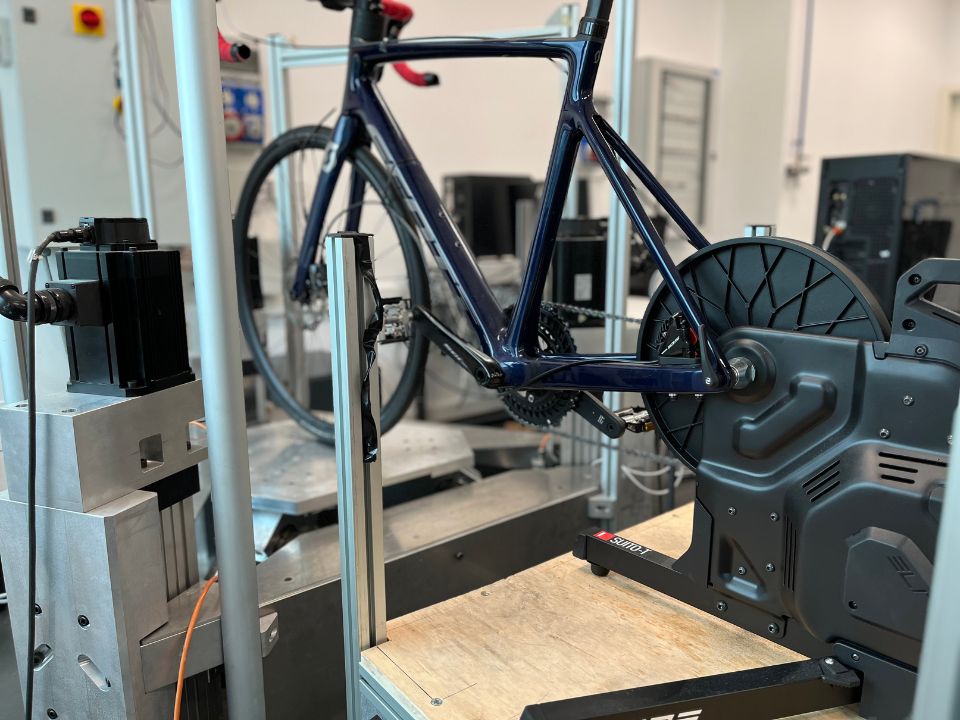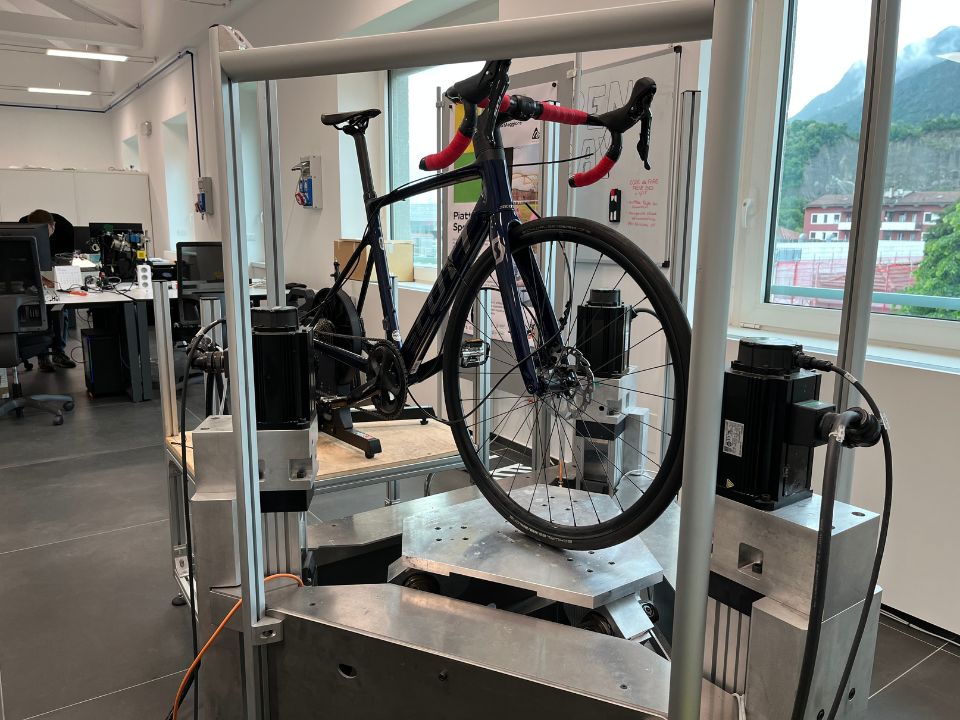The WE-COBOT LAB – Wearable and collaborative robotics – is based at the Lecco Campus of the Politecnico di Milano. The lab is known for its excellent work in the area of wearable and collaborative robotics, with a particular focus on applications related to rehabilitation and support for the frail and infirm.
We had the pleasure of interviewing Professor Alessandra Pedrocchi, researcher and contact person at the lab. We wanted to discover how this centre of excellence came into being, as well as its aims and prospects for development.
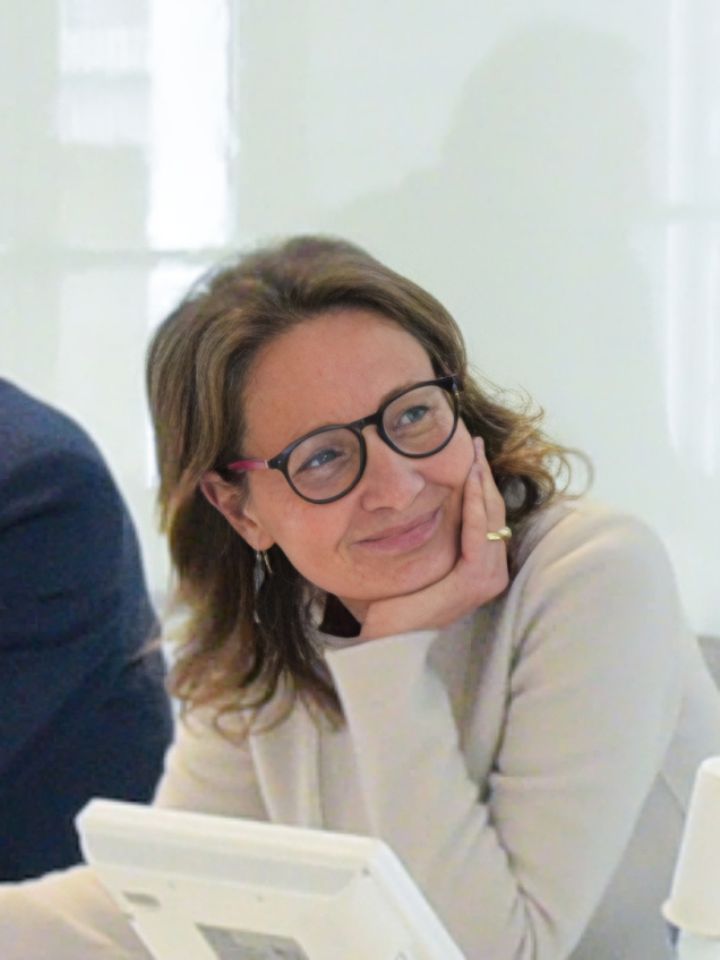
How was WE-COBOT LAB established and what were its first projects?
WE-COBOT LAB was the result of past experience and an ambition to harness skills from different disciplines to meet the needs of the disabled and the frail. It really dates back to the time when we were working with Villa Beretta, the rehabilitation unit at Valduce Hospital, and began to develop robotic devices for use in rehabilitation.
In 2015, representatives of Unione Italiana per la Lotta alla Distrofia Muscolare (Italian Union for the Fight against Muscular Dystrophy), people with muscular dystrophy and their families, came to know our activities asking us to create solutions that went beyond traditional aids, such as motorized wheelchairs, and that would help people with muscular dystrophy in daily activities, in particular in support of actions of the arms, which often represent the most serious limit in their autonomy and dependence on the caregiver.
This prompted the idea of developing active wearable and robotic devices, designed in close collaboration with final users, patients and their families. The complexity of combining skills in bioengineering, mechanics, design, and even architecture, led to the creation of an interdepartmental laboratory, with experts working together to resolve these complex challenges. I’m very grateful to my colleagues and friends from different departments: Professors Marco Tarabini (Mechanics), Giuseppe Andreoni (Design), Emanuele Lettieri (Management, Economics and Industry) e Stefano Capolongo (Architecture, Built Environment, Constructions), who welcomed the challenge to make WE-COBOT what we see today.
What are the lab’s main areas of application?
Our main focus is on rehabilitation and care for people with neuromuscular disabilities. For example, we’ve developed wearable robotic systems, such as exoskeletons and grip support devices, that help improve their quality of life and independence.
We’ve also extended our work to the field of care for the elderly in residential homes, where social robots such as TIAGo are used in socialising activities, to provide cognitive support and help prevent falls. An example of our work is the INTERREG project, currently in evaluation, involving Swiss Residential Healthcare Facilities, which aims to develop cross-border models of integrated robotic assistance.
Another field concerns robotics for well-being at work, with solutions designed to reduce musculoskeletal risks in industrial contexts. For this, we use sensors and ergonomic risk assessment systems – together with simulation modelling – to evaluate commercial devices, improve human-robot integration, and develop new solutions, improving safety and efficiency.
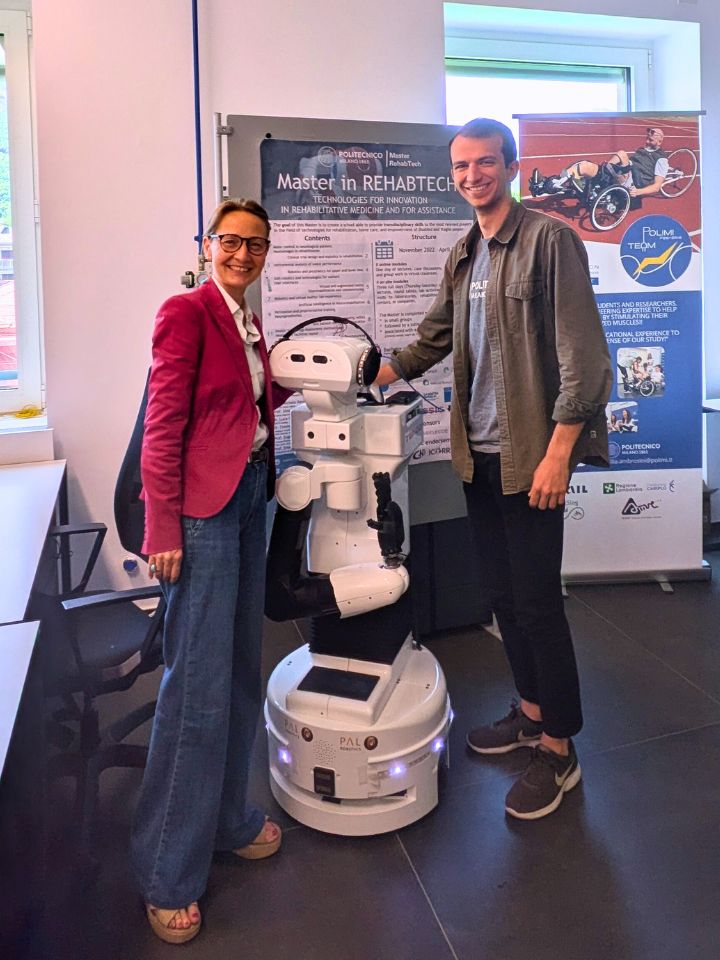
How does the interaction between robots and people with disabilities actually work?
A typical example is TIAGo, a mobile robot that listens to and understands commands, and moves and interacts with the user. It’s a commercial platform we are designing to be an “active player” in fragile people’s everyday activities, such as telling stories, helping with memory games, or enabling distance communication, including remotely. The pandemic, in particular, showed us TIAGo’s potential for providing support in residential homes, by helping to maintain contact between patients and their family members, i.e. preventing a sense of isolation and improving safety. In the context of rehabilitation, TIAGo can recognise movements such as sitting up, and will approach and send signals to help prevent falls or respond to risky behaviour. This system needs to integrate AI technologies and sensors to fit the needs of the individual user.
One of your flagship projects has also been the Trike, a tricycle that encourages mobility and access to sport for people with disabilities, and so promotes social inclusion. How does the Trike work?
The Trike is a three-wheeled recumbent bike, fitted with sensors and designed for use by people with reduced mobility. It’s equipped with an encoder for measuring the crank angle, pedal sensors for detecting the power exerted by the legs, an electric motor for pedal assistance and a Functional Electrical Stimulation (FES) system that can stimulate 8 groups of muscles in the legs. The platform is accompanied by a tablet with a graphical user interface that allows you to configure training parameters and to view data in real time. Various methods of control have been employed to enable people with different degrees of disability to use the platform.
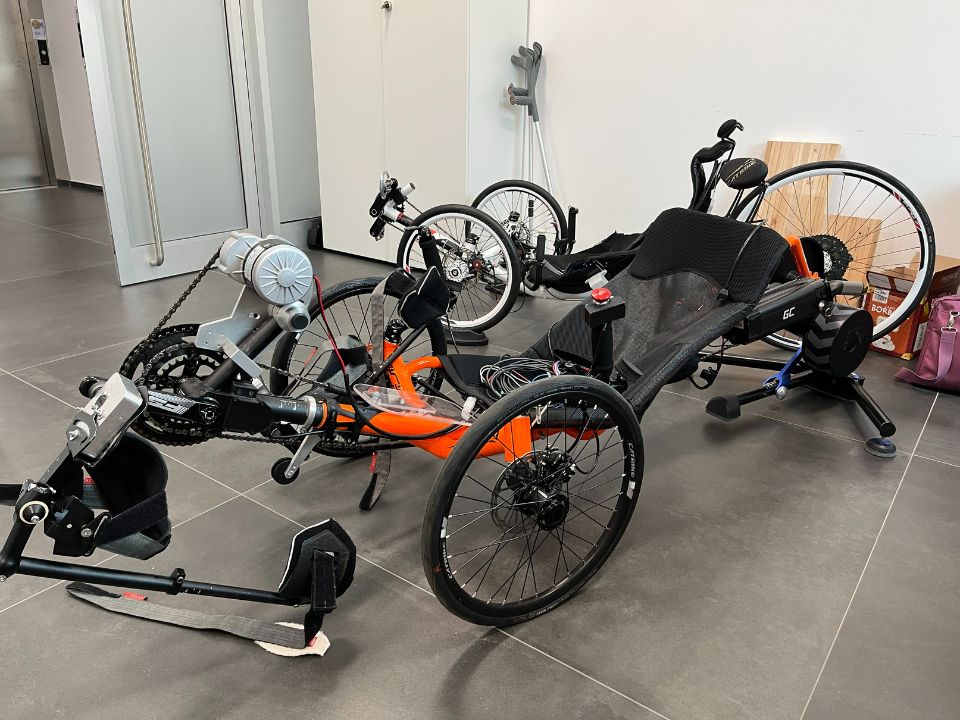
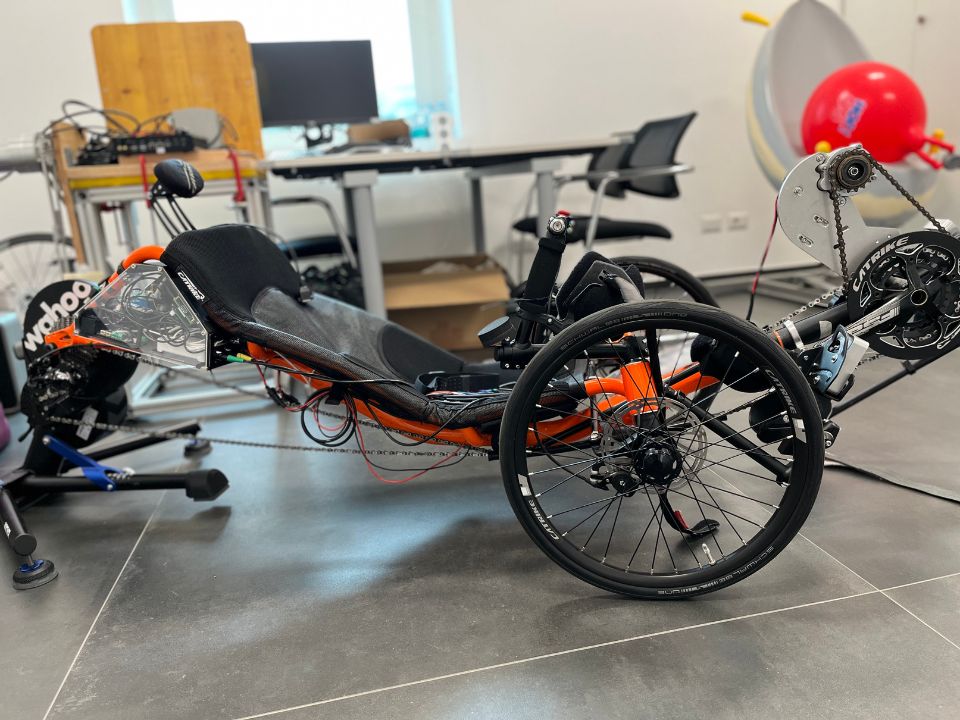
How did this project start?
It was sparked by our participation in Cybathlon, an international competition that brings together disabled athletes from all parts of the world, who compete in various disciplines using the latest forms of assistive technology. One of the aims is to encourage the development and use of innovative assistive technologies. Scientists, engineers and companies from all around the world strive to create increasingly high-performance and intuitive devices to improve the quality of life of disabled people. Another aim of the competition is to raise public awareness about issues related to disability and inclusion, showing how technology can be a powerful tool to overcome barriers and promote independence.
In 2019, we put together a team at the Politecnico di Milano, consisting mainly of undergrads and PhD students in the field of Biomedical Engineering and Mechanical Engineering. We then participated in the FES bike Cybathlon (Functional Electrical Stimulation bike) discipline in the event held remotely in November 2020, and in the competition staged in Zurich in October 2024. We came third in this latest edition, out of 10 teams taking part, with Andrea Gatti acting as the rider.
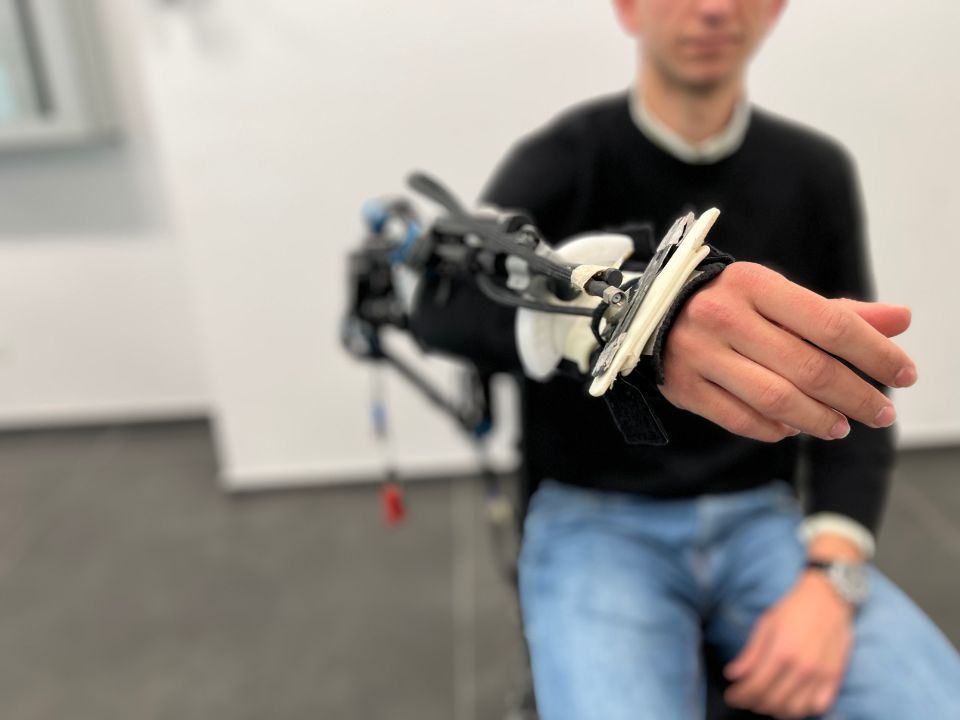
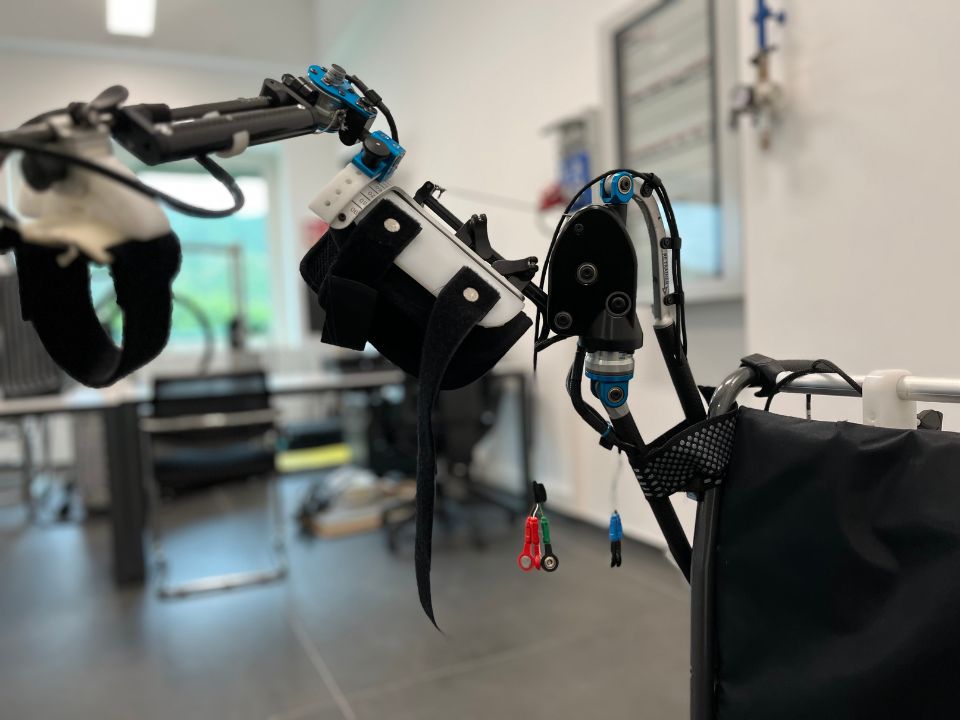
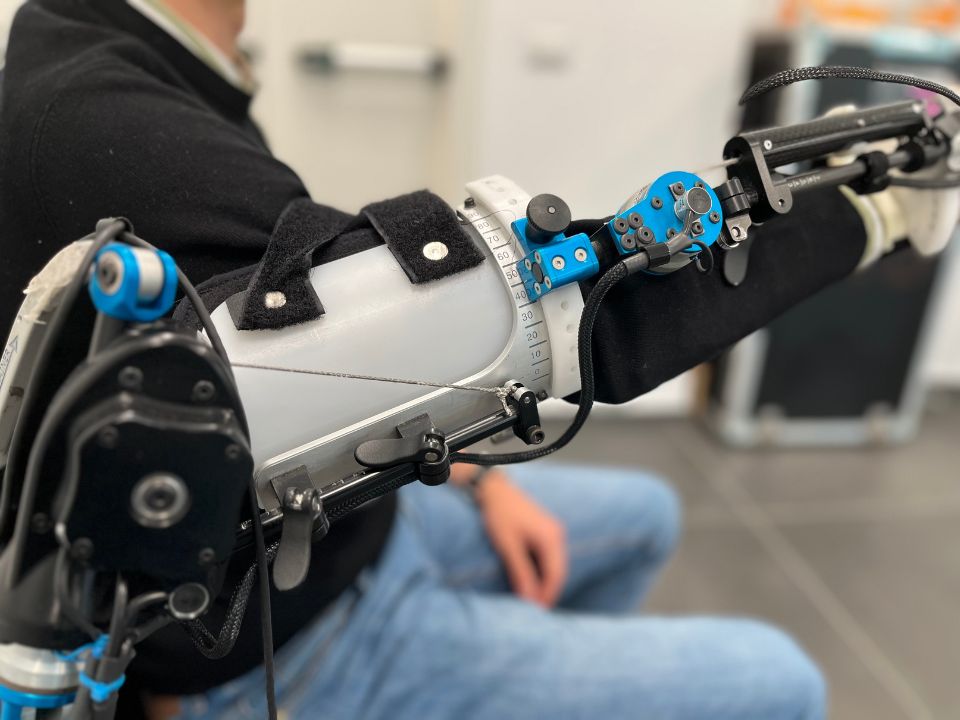
What are the main challenges for the WE-COBOT LAB today?
One of the greatest challenges is uniting the people, with all their residual capabilities, and technologies, creating collaborative solutions that are effective, sustainable and easily accessible. And above all, to ensure that what is available is fully used in the clinic at the service of patients’ needs. For this reason, we realized that training is the keystone.
In 2020, on the initiative of Rector Resta, Prof. Carrozza, then Scientific Director of the Don Gnocchi Foundation, and Dr. Molteni, Director of Villa Beretta, we created the “RehabTech” master’s degree, a post-graduate university course, dedicated to engineers, doctors, physiotherapists and other rehabilitation professionals, with the aim of training figures capable of integrating innovative technologies into clinical and social contexts. In the second edition in 2022, the Master has become international, with partners in Switzerland and Spain, and has further enriched the multidisciplinary and global approach. We are now preparing the new edition, also international, which will start in October 2025, with further integrations related to Artificial Intelligence, Extended Reality and home devices.
On the neurorehabilitation research front, we’re currently working on hybrid systems that combine functional electrical stimulation and active robotics, with the aim of improving neural plasticity and aiding motor recovery.
What is your vision of the role of the lab in the regional and global context?
Our lab is part of an exceptional community that has been working together for over 20 years, and which unites the Lecco hub of the Politecnico, ASST Lecco, ATS Brianza, Villa Beretta, IRCCS Eugenio Medea – La Nostra Famiglia, IRCCS INRCA Casatenovo and CNR. Thanks to the valuable role of Univerlecco, and the energy of its President, engineer Vico Valassi, in coordinating operations, we have managed to build a strong, powerful network, able to work in synergy to attract international partners and develop projects with a global impact.
I believe the added value of We-Cobot is this ability to bring together different skills, to share resources and ideas, and to work in a responsible way to improve people’s quality of life.
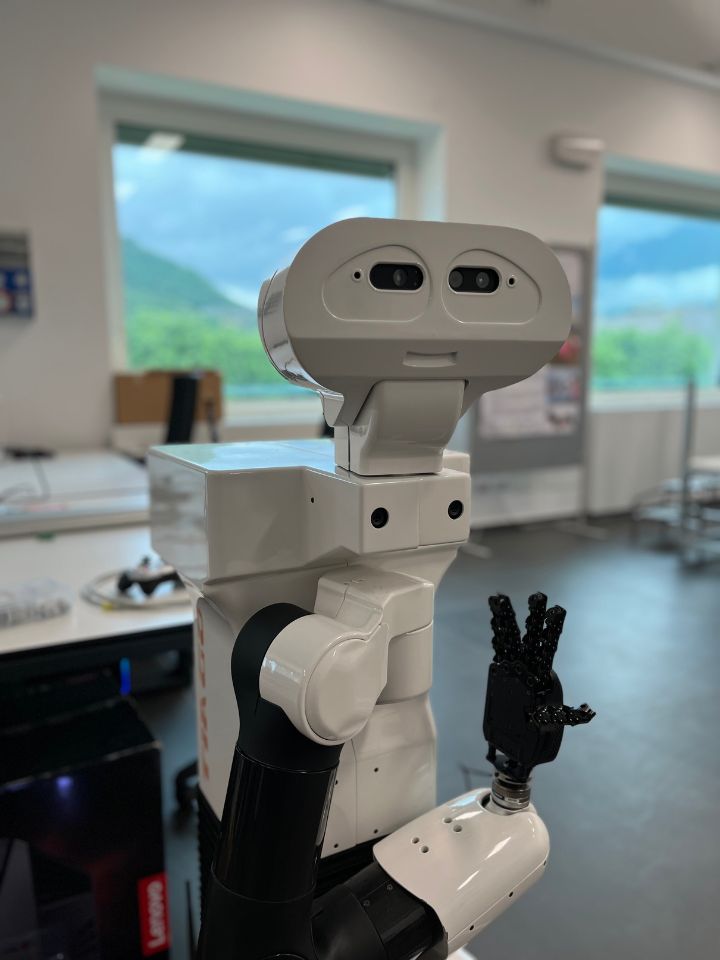
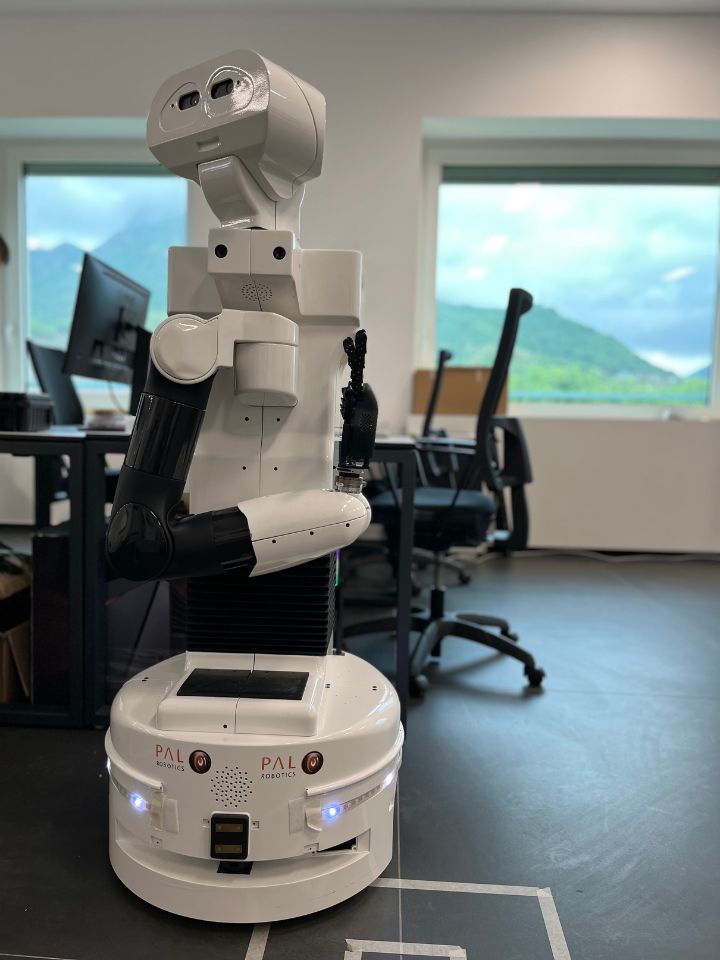
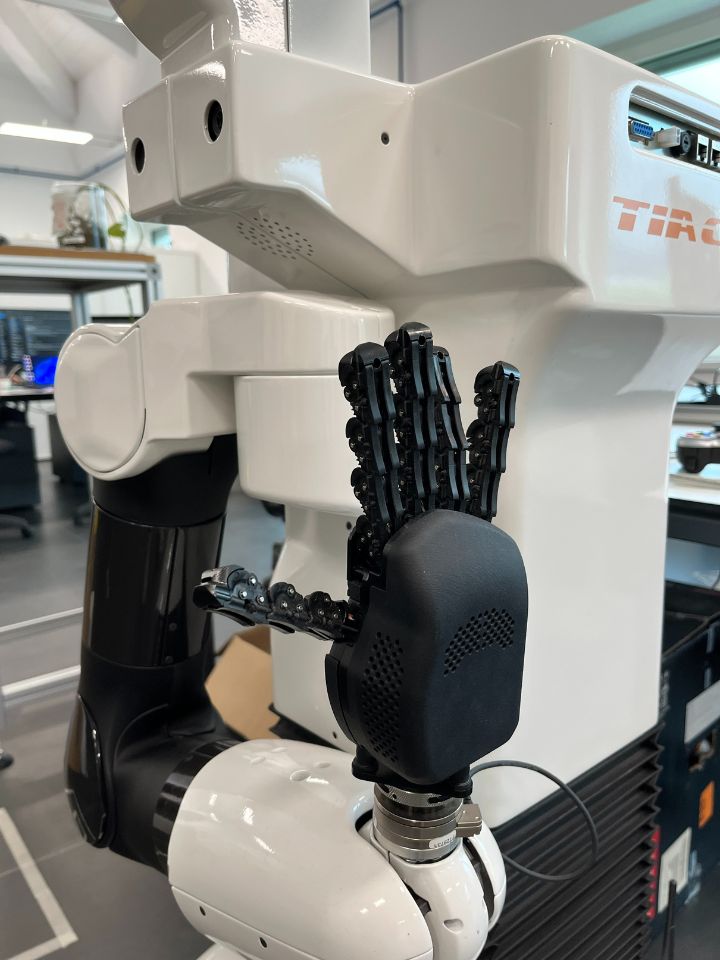
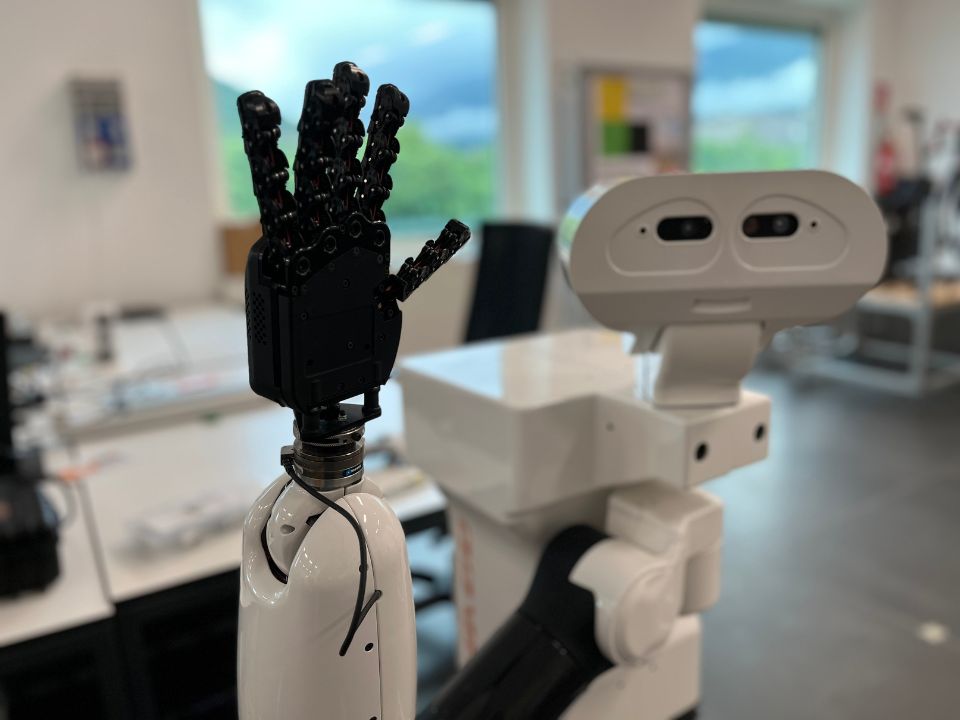
What are your most challenging projects and prospects for development?
One of the most promising projects currently underway involves trials of hybrid robotic systems combined with functional electrical stimulation, for use in post-stroke and myel-injury recovery. These devices aid natural movement, stimulating the brain and muscles at the same time, using an approach that focuses on facilitating brain plasticity.
We’re also working on orthopaedic solutions, such as robotic devices that support the functional recovery of limbs and joints, and we’re developing teaching modules and training programmes to spread knowledge of these technologies abroad.
Finally, our goal is to transform these innovations into practical, accessible and sustainable services, to bring the benefits of robotics to more and more people, wherever they are.
In conclusion, what gives you the most satisfaction when working on these projects?
My greatest reward is to see young students and researchers growing in knowledge and enthusiasm, and playing their part in innovating the rehabilitation sector. When a patient manages to regain his autonomy or improve his quality of life because of the technologies we’ve developed, our work takes on even greater meaning. Our daily challenge is to keep this enthusiasm alive, to share ideas, and to work in an atmosphere of collaboration and commitment.
WE-COBOT LAB is therefore not just a research centre, but also a reference point for social and technological innovation, always looking to the future and focusing on the people it can help.
By taking you on this virtual journey, we’ve shown how WE-COBOT LAB is a living example of how multidisciplinarity, collaboration and innovation can transform people’s lives, pursuing a mission that combines technology and humanity. It’s a place where the future is being built today, with dedication, expertise and an inclusive vision.
